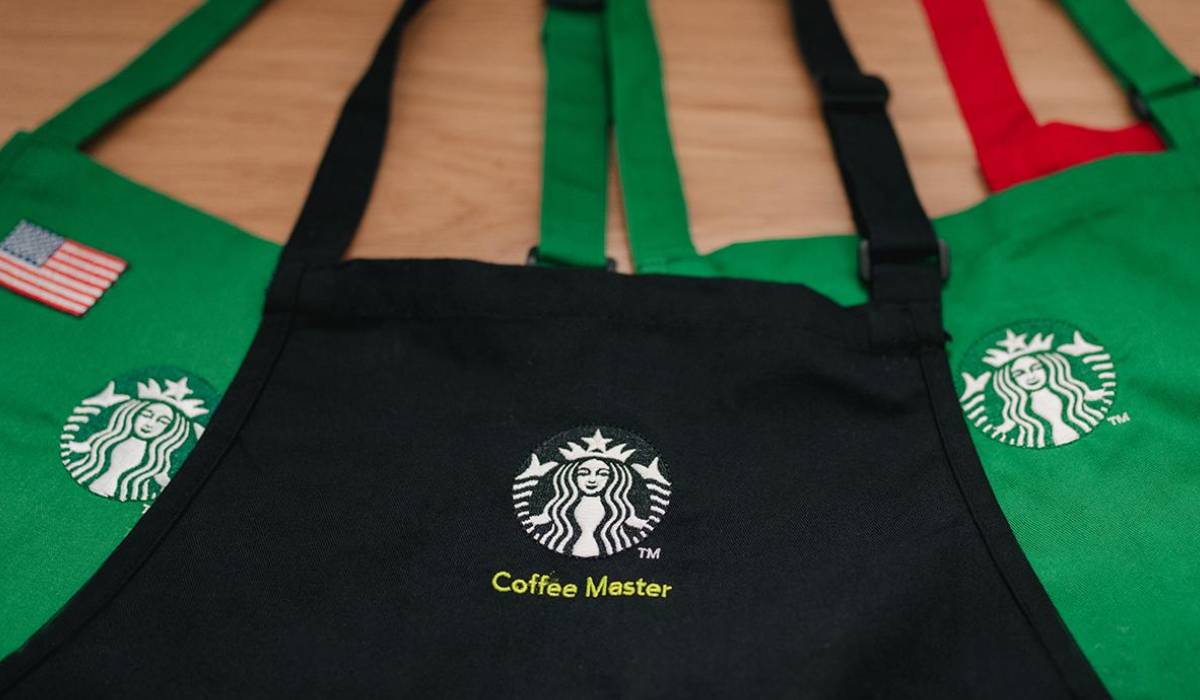Starbucks announced Monday it’s bringing the Coffee Master program back to North America.
The initiative was introduced almost 20 years ago as a way to designate workers as coffee experts. In May 2015, the company revealed there were more than 5,000 active members around the world.
Coffee Masters, who wear black aprons, will receive the honor after completing Starbucks Coffee Academy, an educational platform launched in 2019 to teach anyone—employee or not—the foundations of coffee, from farm to cup.
The return of Coffee Masters comes after interim CEO Howard Schultz’s listening tour with employees across the country. He and his team stopped in Phoenix, Chicago, and Long Beach and San Jose, California—among other places. Out of those conversations, Starbucks leadership recognized a specific desire for the program to come back.
MORE: Will Starbucks’ Sales Suffer from Union Battle?
Employees who become Coffee Masters will have an opportunity to be selected for a trip to Starbucks’ coffee farm in Hacienda Alsacia, Costa Rica.
“One piece of feedback has been clear: becoming a Coffee Master and receiving a black apron was one of the coolest parts of being a barista at Starbucks,” the company said in a blog post. “It continues to be a source of pride for partners to visually showcase their knowledge and skill.”
When Starbucks first opened in 1971, workers wore brown aprons, but transitioned to green in 1987. Those who complete the Starbucks College Achievement Plan receive green aprons embroidered with a mortarboard. Other special designations include red aprons for the holiday season, embroidered aprons for veterans and military spouses, orange aprons in the Netherlands to celebrate King’s Day, pale blue aprons for the launch of Frappuccino Happy Hour, aprons with Starbucks embroidered in sign language for signing stores, and a purple apron for barista champions.
As the program comes back, a national union battle wages in the background. Nearly 30 U.S. stores have voted in favor of unionizing, according to Workers United, and employees at more than 200 locations in 31 states have sought the distinction.
Some of Schultz’s “collaboration sessions” with employees were disrupted by union organizers. His message to Starbucks workers is that they can’t be “distracted by the different vision being put forward by union organizers at some Starbucks stores.”
“And while not all the partners supporting unionization are colluding with outside union forces, the critical point is that I do not believe conflict, division, and dissension—which has been a focus of union organizing—benefits Starbucks or our partners,” he wrote in a blog post.







